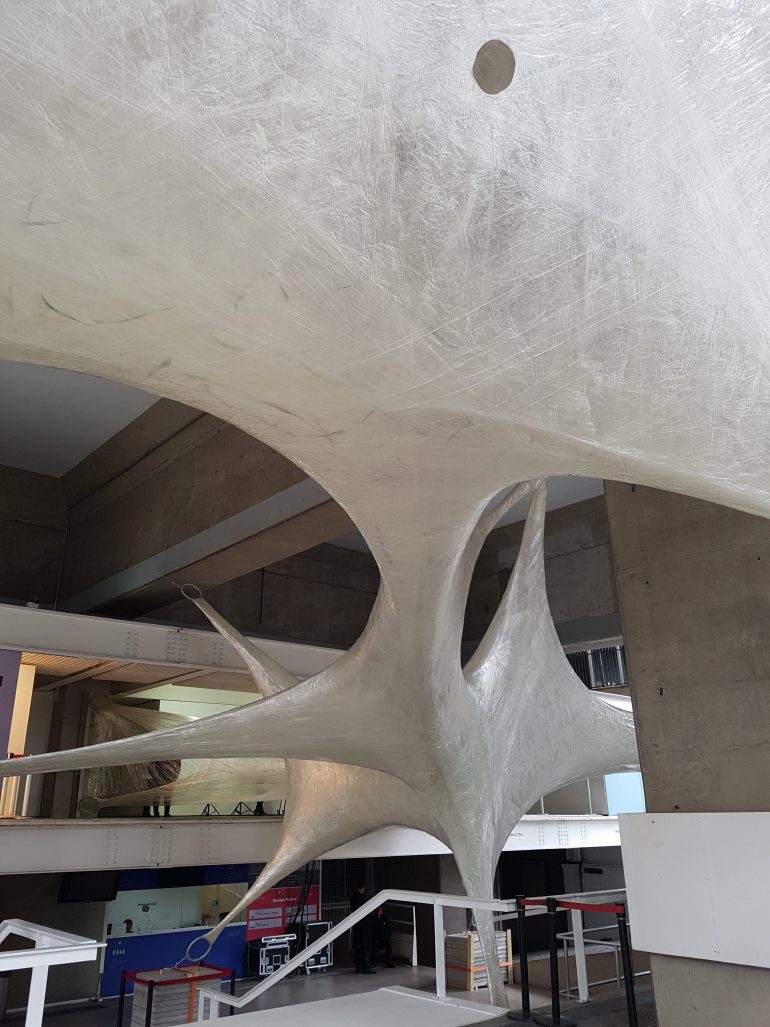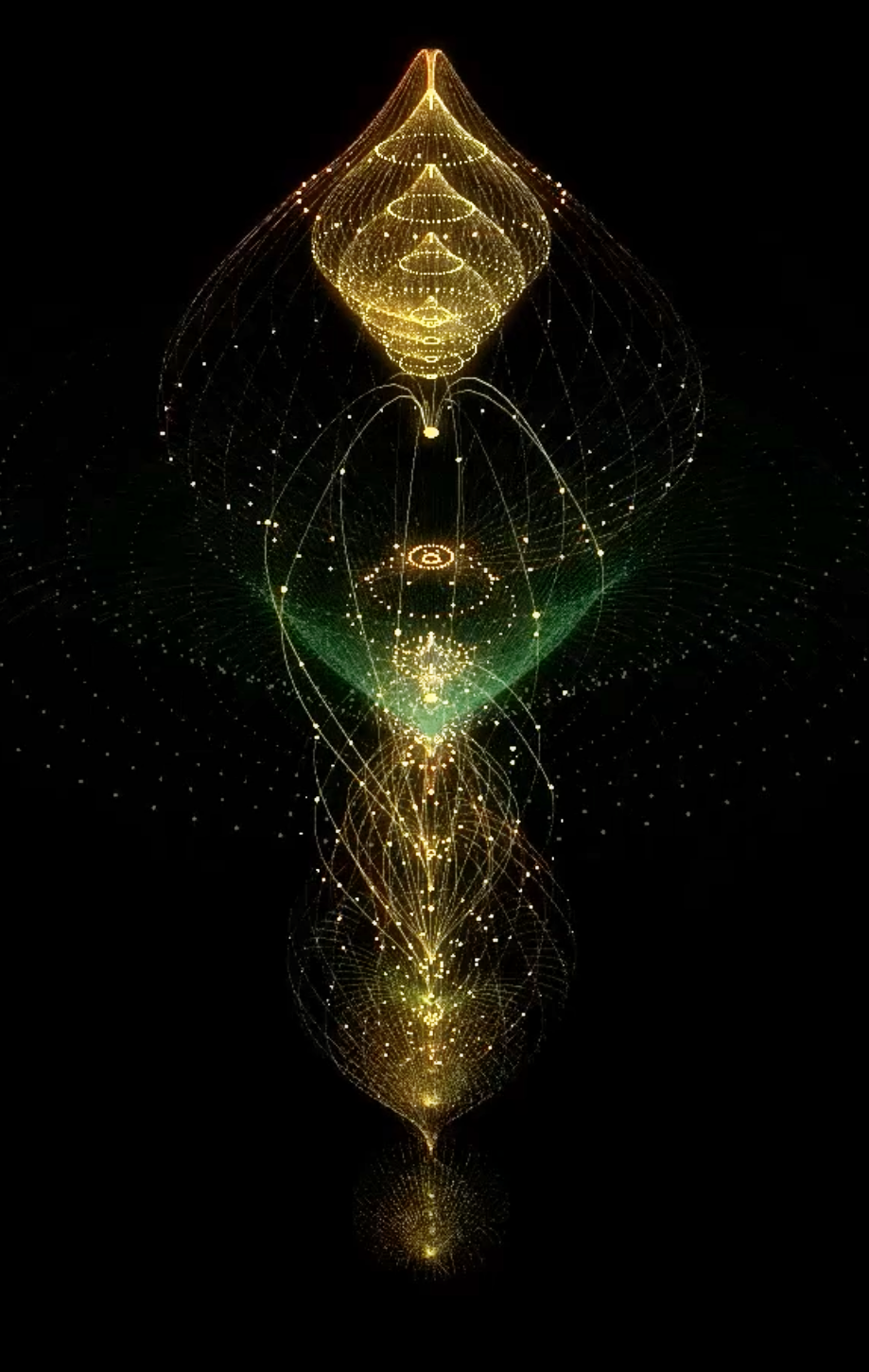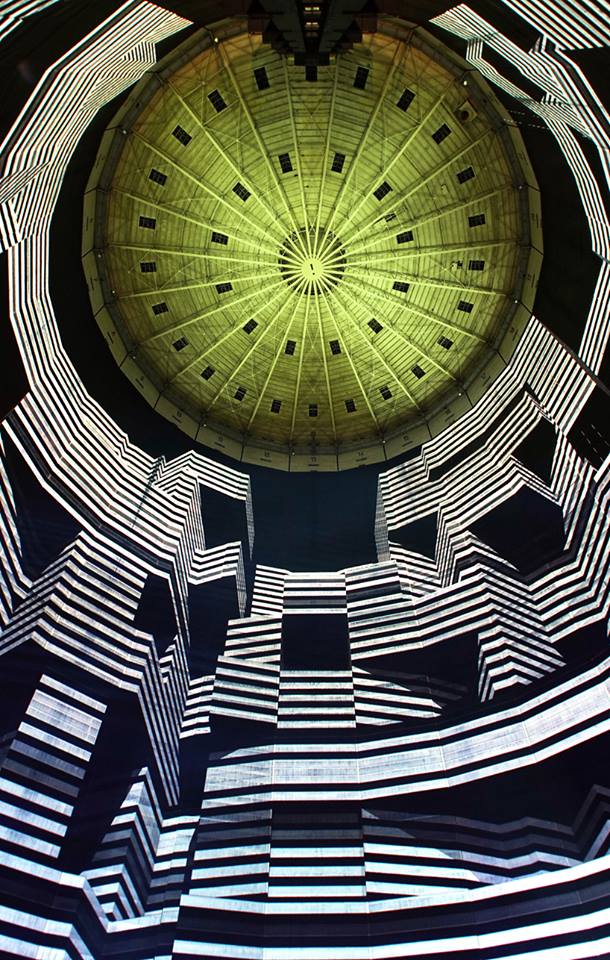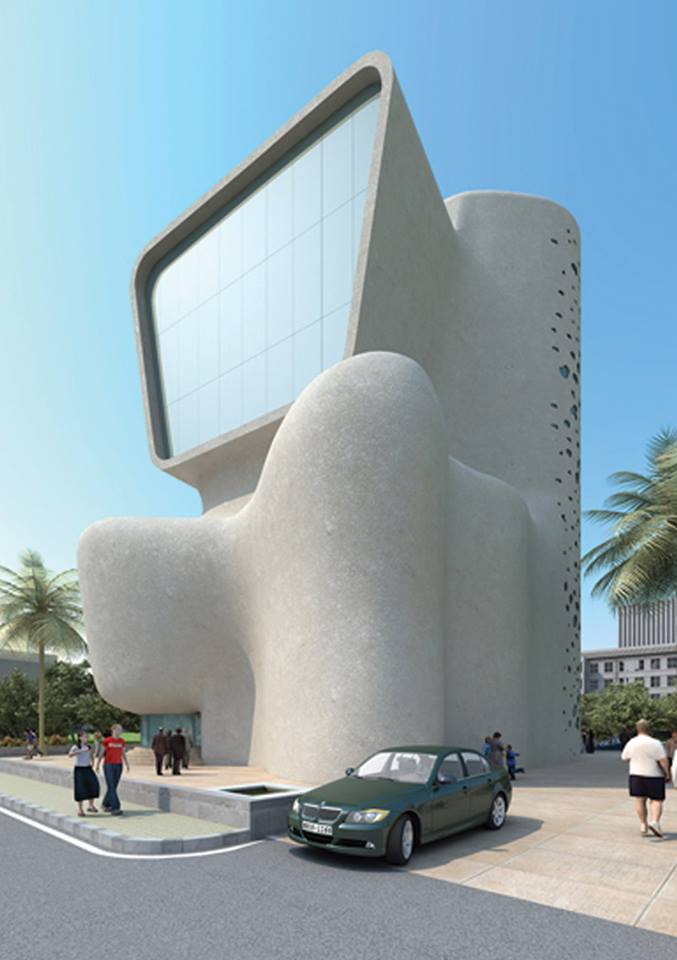
Robert Henke
Destructive observation field
The installation behaves like a living organism, it creates expanding and contracting forms that have a semi-organic appearance. During the course of the exhibition the deformations of the plate add up resulting in a more and more complex surface structure. The visible shapes will get more detailed and fragmented. The density of the stored information on the black plate increases. The characteristic visual appearance of the installation is the result of interference patterns, waves amplifying and canceling each other out in space, leaving complex traces of light and darkness.












